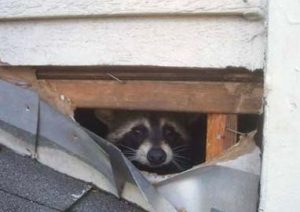 Squirrels and Their Cold-Weather Habits: As winter blankets the Twin Cities, you may notice an increase in wildlife activity, and squirrels are no exception. These resilient creatures adapt to the colder months by seeking refuge in tree cavities or constructing nests with leaves and twigs. They remain active, foraging for food sources such as acorns and nuts they stored during the fall. While squirrels are generally harmless, they may become more visible in search of sustenance during the winter, creating a common encounter for residents.
Squirrels and Their Cold-Weather Habits: As winter blankets the Twin Cities, you may notice an increase in wildlife activity, and squirrels are no exception. These resilient creatures adapt to the colder months by seeking refuge in tree cavities or constructing nests with leaves and twigs. They remain active, foraging for food sources such as acorns and nuts they stored during the fall. While squirrels are generally harmless, they may become more visible in search of sustenance during the winter, creating a common encounter for residents.
Hibernate or Migrate: Bat Behavior in Winter: Bats play a vital role in the ecosystem, and some species may remain in the Twin Cities during winter. Rather than hibernating, bats enter a state of torpor to conserve energy. They may roost in secluded spots like attics or caves. If you come across bats during winter, it’s crucial to avoid disturbing them, as they are an essential part of local insect control. Minnesota Wild Animal Management can help safely address bat-related concerns with minimal disruption to their winter habits.
The Winter Presence of Foxes and Coyotes: Winter brings out the cunning canids in the Twin Cities—foxes and coyotes. These adaptable creatures thrive in urban environments and may be seen scavenging for food, especially during the colder months when resources are scarcer. Foxes, with their distinctive red coats, and coyotes, known for their resourcefulness, may cross paths with residents. While generally wary of humans, it’s essential to exercise caution and maintain a safe distance from these wild canids.
Deer Roaming in Residential Areas: Deer are not uncommon sights during the winter months in the Twin Cities. As natural habitats shrink due to urban development, deer may venture into residential areas in search of food. The scarcity of resources in winter makes gardens and shrubs appealing to these graceful creatures. Residents should be mindful of deer crossings and take precautions to prevent damage to landscaping. Minnesota Wild Animal Management provides guidance on coexisting with deer and minimizing potential conflicts.
Winter Bird Watching Opportunities: While mammals may be the main focus of winter wildlife encounters, the Twin Cities also offer excellent bird watching opportunities during the colder months. Various bird species, such as cardinals, chickadees, and nuthatches, adapt to winter conditions and remain active. Providing bird feeders with suitable seeds can attract a diverse array of feathered friends to your backyard, offering a delightful and educational winter wildlife experience.
Winter wildlife encounters in the Twin Cities require an understanding of the habits and behaviors of local animals. Minnesota Wild Animal Management is here to assist residents in responsibly addressing wildlife encounters during the winter months, ensuring a harmonious coexistence with the diverse fauna that share our urban environment.




